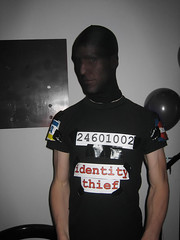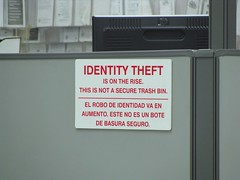In an increasingly technologically-based world, being certain of precisely who you are speaking to or doing business with can be tricky. Identity verification is an important step in most online transactions that concern money or sensitive information and services, but it can also be used during recruitment processes as a part of a background check.
This article will explain what an identity verification service is, why they are useful, and how they work.
What is an Identity Verification Service?
An identity verification service is a process by which the information and identity provided by an individual is investigated and found to be true or false. These comprehensive online services are based on the traditional identity verification processes used in banks and other financial institutions when new accounts are opened.
Technological services are more robust and comprehensive in their verification methods, however. The point of this process is to check and verify that the person applying for an account or service is being honest and upfront about who they are.
Why Use an Identity Verification Service?
While you can find arrest history with a universal background check (as well as other crucial information), the ability to complete a background check of any kind requires correct information about an individual.
Using an identity verification service enables you to confirm that you are performing a background check on, or providing a service to, a person who is identifying themselves correctly. This ensures that the information you receive from a check is correct and connected to the person you are dealing with.
There are other reasons to use such a service, however. For example, if you run a business with an online component identity verification at login, it’s important for data protection purposes.
Identity verification is also an important part of risk management for most businesses and can help you to avoid fines and legal issues, reduce the risk of fraud, and help you to meet regulatory requirements while showing due diligence.
How Do Identity Verification Services Work?
Digital identity verification services collect and verify personal data and information, usually at the point of account access or onboarding to a new service, by checking it against reputable sources. There are different approaches to this process:
- Data-oriented digital verification
- Traditional, document-based digital identity verification
In most cases, data-based identity verification is sufficient, especially for platforms such as online shopping or online lottery ticket purchases. In these cases, the service provider or business may request information such as your date of birth, full name, or national ID/social security number.

For financial services, such as banking or personal loan applications, however, digital document-based verification is usually required. In these cases, the institution or business you are dealing with may request copies or pictures of official documents, such as your driver’s license or birth certificate.
Whichever method of identity verification a company or institution undertakes, the process of verification is the same. The documents or data provided will be checked against trusted sources to ensure that all details match perfectly. When there are no issues, this is a very quick process that should take no more than a few minutes.
What Happens When An Identity Check Fails?
So, what happens when the identity verification process fails? What are the secondary processes, and what are the repercussions when information is found to be false? There are a number of potential issues that can cause queries or failures in the identity verification process. The most common are:
- Typos or spelling errors.
- Out-of-date documentation.
- Obscured or damaged documentation.
- Poor image quality regarding documentation.
In most cases, the first reaction of a company will be to query the details that do not match or request that documentation be re-sent. If all is in order, they may proceed to a positive verification, but it is also common for companies to ask for secondary or supporting information or documents in these cases.
If issues cannot be resolved and it is impossible to verify the identity of a person, there are two possibilities. Firstly, and in most cases, services will be denied to the applicant on the basis of failed identity verification.
In some cases, however, more robust action may be taken. For example, trying to open a bank account under a false name is a legal offense and financial institutions may see fit to hand information over to the authorities.
What’s Amazon Rekognition Identity Verification | Amazon Web Services
Identity Attack Vectors: Implementing an Effective Identity and Access Management Solution



























![Reblog this post [with Zemanta]](http://img.zemanta.com/reblog_e.png?x-id=8b43f6bc-e702-44d1-8276-fc6bd0f54018)

![Reblog this post [with Zemanta]](http://img.zemanta.com/reblog_e.png?x-id=289e45eb-0de3-4464-b964-7f07c6c8b147)


